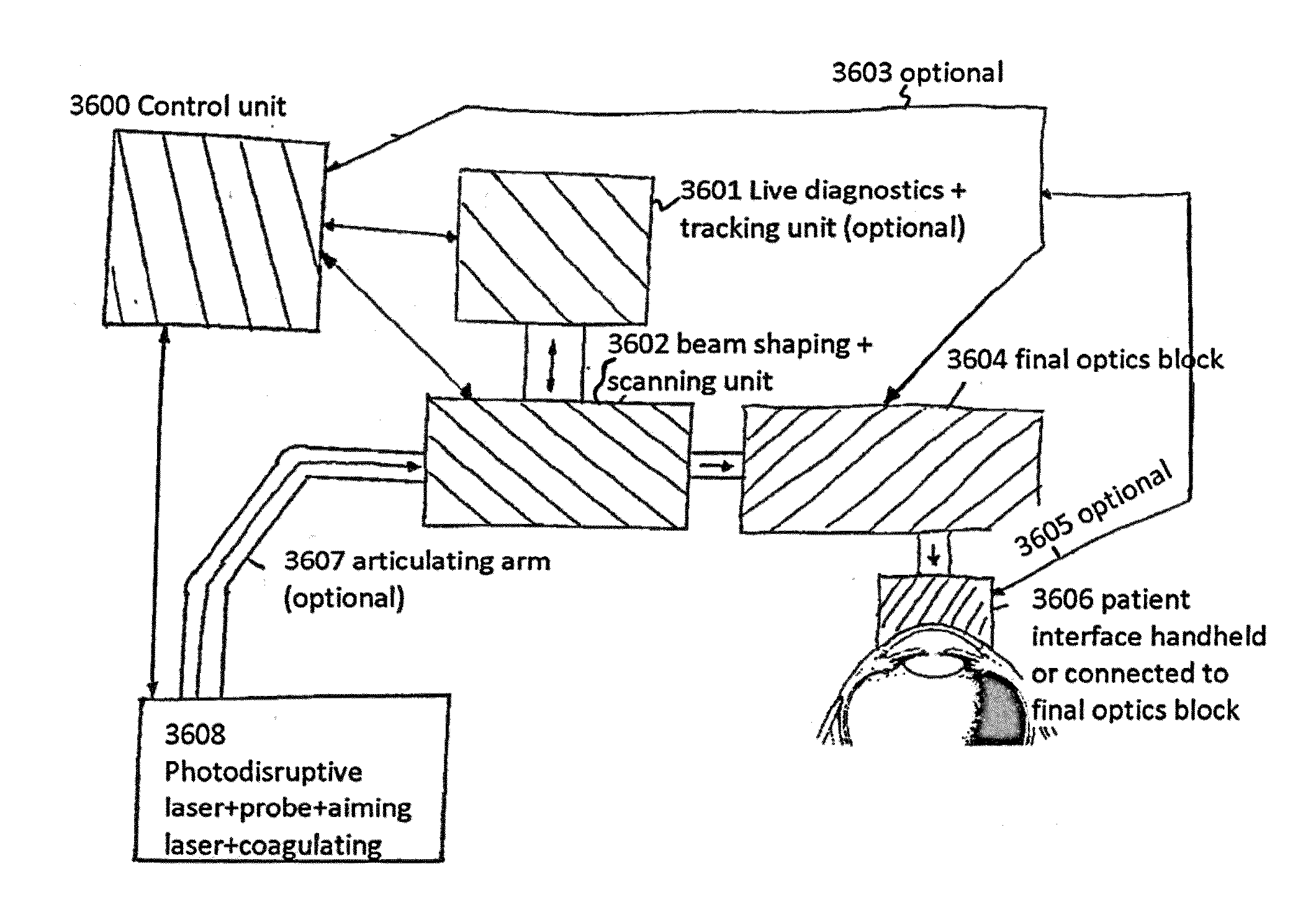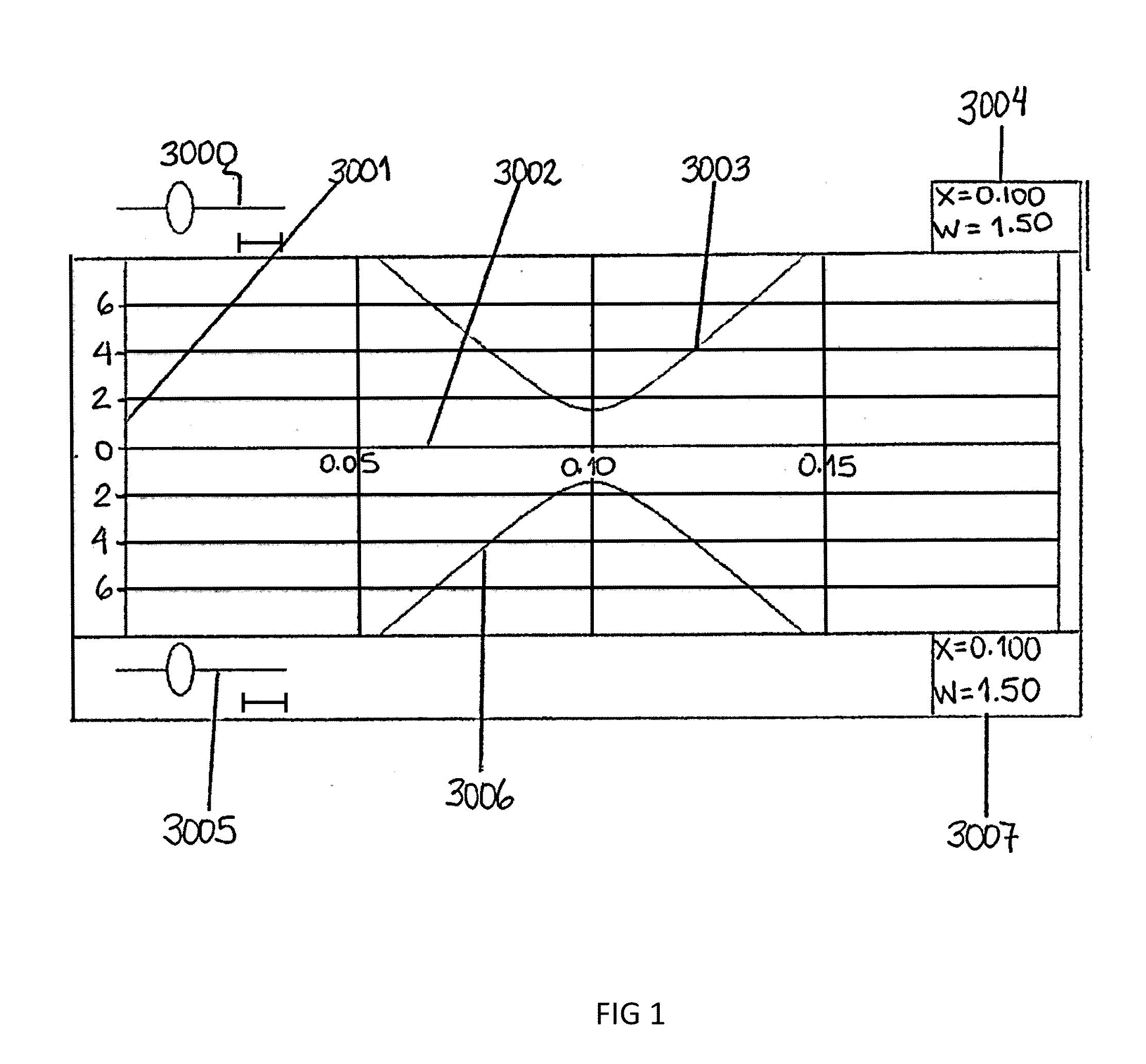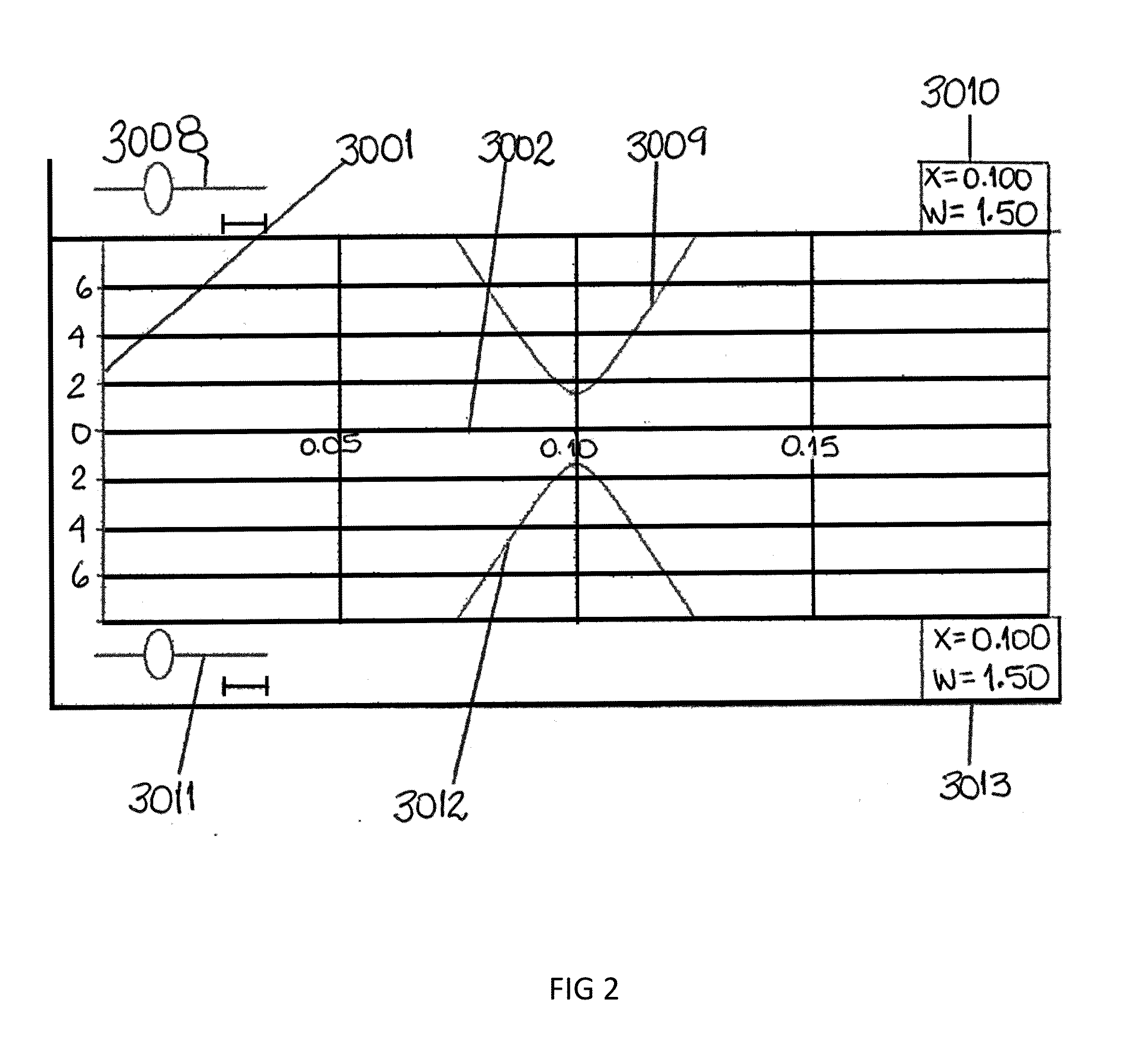Systems and methods to deliver photodisruptive laser pulses into tissue layers of the anterior angle of the eye
a technology of anterior angle and laser pulse, which is applied in the field of systems and methods to deliver photodisruptive laser pulses into tissue layers of the anterior angle of the eye, can solve the problems of ineffectiveness in all patients, invasive (full operating room) procedures, applied to the trabecular, etc., and achieves a high degree of fluency for breakdown, less precision, and minimizing the effect of spot siz
- Summary
- Abstract
- Description
- Claims
- Application Information
AI Technical Summary
Benefits of technology
Problems solved by technology
Method used
Image
Examples
Embodiment Construction
[0078]The word “fs-laser” throughout this disclosure stands for femtosecond laser and is meant to cover any laser source, that can provide pulse durations smaller than 2 for elliptical focus) allows the use of very small pulse energies in the range of <200 micro Joules (preferable range <50 micro joules) while still achieving a photodisruptive (plasma induced optical breakdown) tissue reaction that allows for the creation of a hole (tunnel) in tissue layers in the anterior angle of the eye (e.g the Trabecular Meshwork). FIG. 9 shows the anatomical features of the anterior angle area of the eye. It is critical to keep the pulse energies small since the undesired side effects such as shockwaves and large cavitation bubbles scale with the pulse energy, reduce precision and cause increasing collateral tissue damage around the desired target zone.
[0079]FIG. 1. The small focus requirement leads to a large focusing beam convergence angle (high numerical aperture NA) in the range of 10-90 d...
PUM
 Login to View More
Login to View More Abstract
Description
Claims
Application Information
 Login to View More
Login to View More - R&D
- Intellectual Property
- Life Sciences
- Materials
- Tech Scout
- Unparalleled Data Quality
- Higher Quality Content
- 60% Fewer Hallucinations
Browse by: Latest US Patents, China's latest patents, Technical Efficacy Thesaurus, Application Domain, Technology Topic, Popular Technical Reports.
© 2025 PatSnap. All rights reserved.Legal|Privacy policy|Modern Slavery Act Transparency Statement|Sitemap|About US| Contact US: help@patsnap.com



